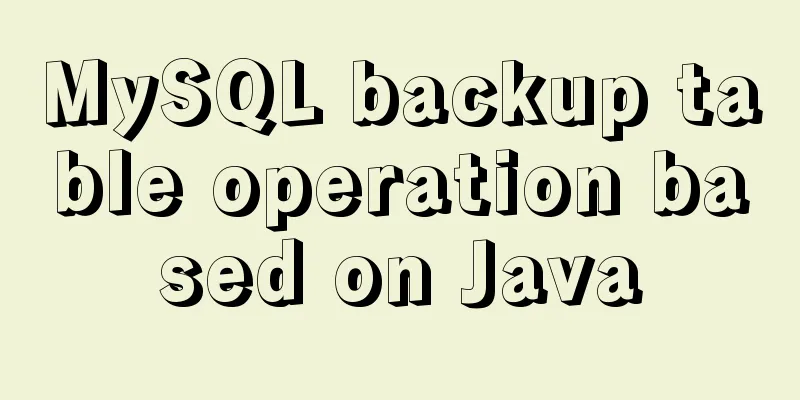MySQL backup table operation based on Java

|
The core is mysqldump and Runtime
Java Code Collection Code The code class that performs the function is as follows: Java Code Collection Code In Action, you can directly call the backup operation method: Java Code Collection Code Java Code Collection Code Then when the page JSP is called, a response prompt can be given. My judgment is that only one table can be deleted:
function deleteTableByTableName(){
var pk = table.getSelectedKeys();
if(""==pk){
alert("Please select a record!");
return false;
}
if(pk.length > 1){
alert("Please select a record!");
return false;
}
var rows = table.get(pk);
var tableName=rows.tableName;
if(confirm("Are you sure you want to delete this table?")) {
if(confirm("Do you need to back up the table before deleting it?\n\nAfter selecting backup, the system will perform related operations in the background!\nDuring this period, you cannot delete the table!\nThe backup operation may last for several hours! Please be aware!"")) {
document.form1.action="backUpTable.action?tableName=" + tableName;
document.form1.submit();
}else{
if(confirm("Are you sure you want to submit? The table will be deleted!")) {
document.form1.action="del.action?tableName=" + tableName;
document.form1.submit();
}
}
}
}The above is the full content of this article. I hope it will be helpful for everyone’s study. I also hope that everyone will support 123WORDPRESS.COM. You may also be interested in:
|
<<: Solution to the error problem of Vscode remotely connecting to Ubuntu
>>: Vue uses element-ui to implement menu navigation
Recommend
Implementation code of short video (douyin) watermark removal tool
Table of contents 1. Get the first link first 2. ...
Detailed example of MySQL subquery
Subquery Classification Classification by returne...
Boundary and range description of between in mysql
mysql between boundary range The range of between...
Detailed explanation of various methods of Vue component communication
Table of contents 1. From father to son 2. From s...
Detailed explanation of uniapp's global variable implementation
Preface This article summarizes some implementati...
Implementation example of react project from new creation to deployment
Start a new project This article mainly records t...
Summary of 50+ Utility Functions in JavaScript
JavaScript can do a lot of great things. This art...
HTML+CSS to achieve cyberpunk style button
First look at the effect: Preface: I came up with...
Vue realizes the function of uploading photos on PC
This article example shares the specific code of ...
A Brief Discussion on the Navigation Window in Iframe Web Pages
A Brief Discussion on the Navigation Window in If...
How does Vue solve the cross-domain problem of axios request front end
Table of contents Preface 1. Why do cross-domain ...
Basic Implementation of AOP Programming in JavaScript
Introduction to AOP The main function of AOP (Asp...
Let's take a look at some powerful operators in JavaScript
Table of contents Preface 1. Null coalescing oper...
Summary of some tips on MySQL index knowledge
Table of contents 1. Basic knowledge of indexing ...
Detailed explanation of using backgroundImage to solve the image carousel switching
Implementing carousel with a single DOM node You ...









